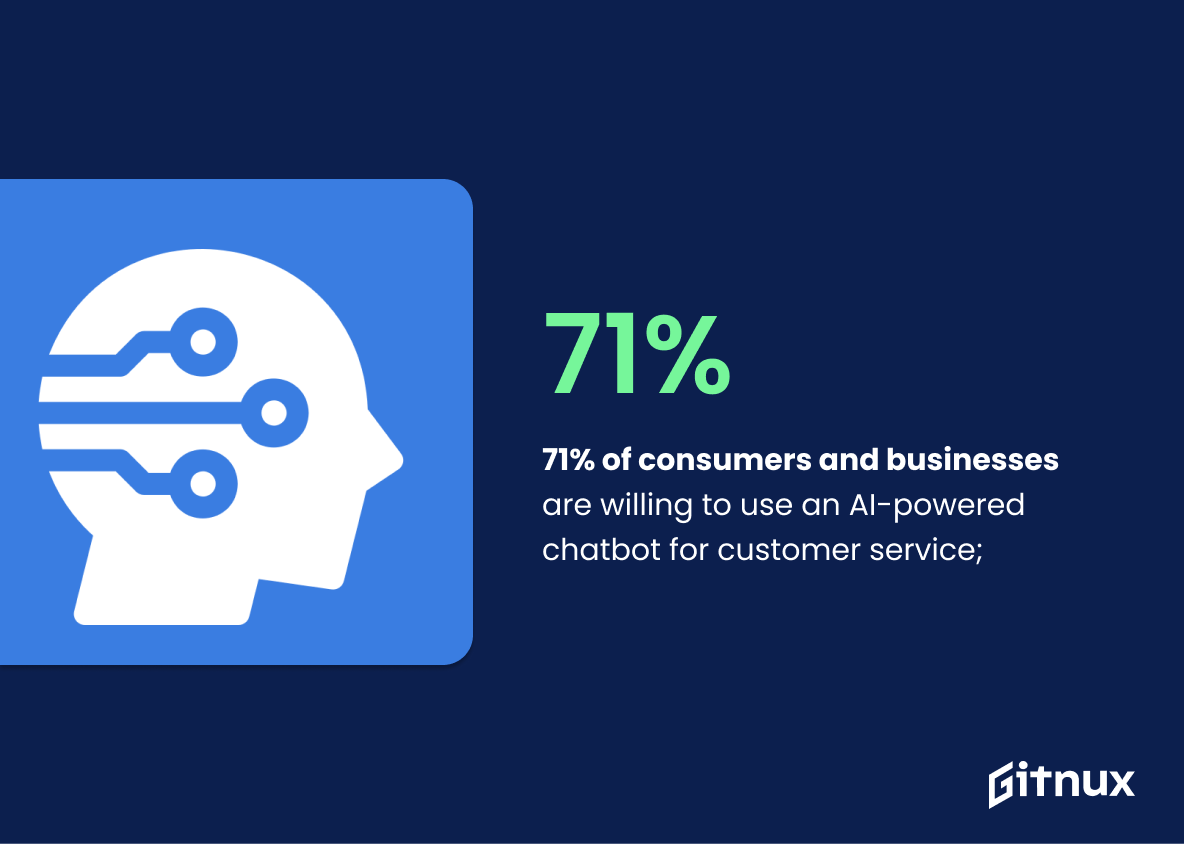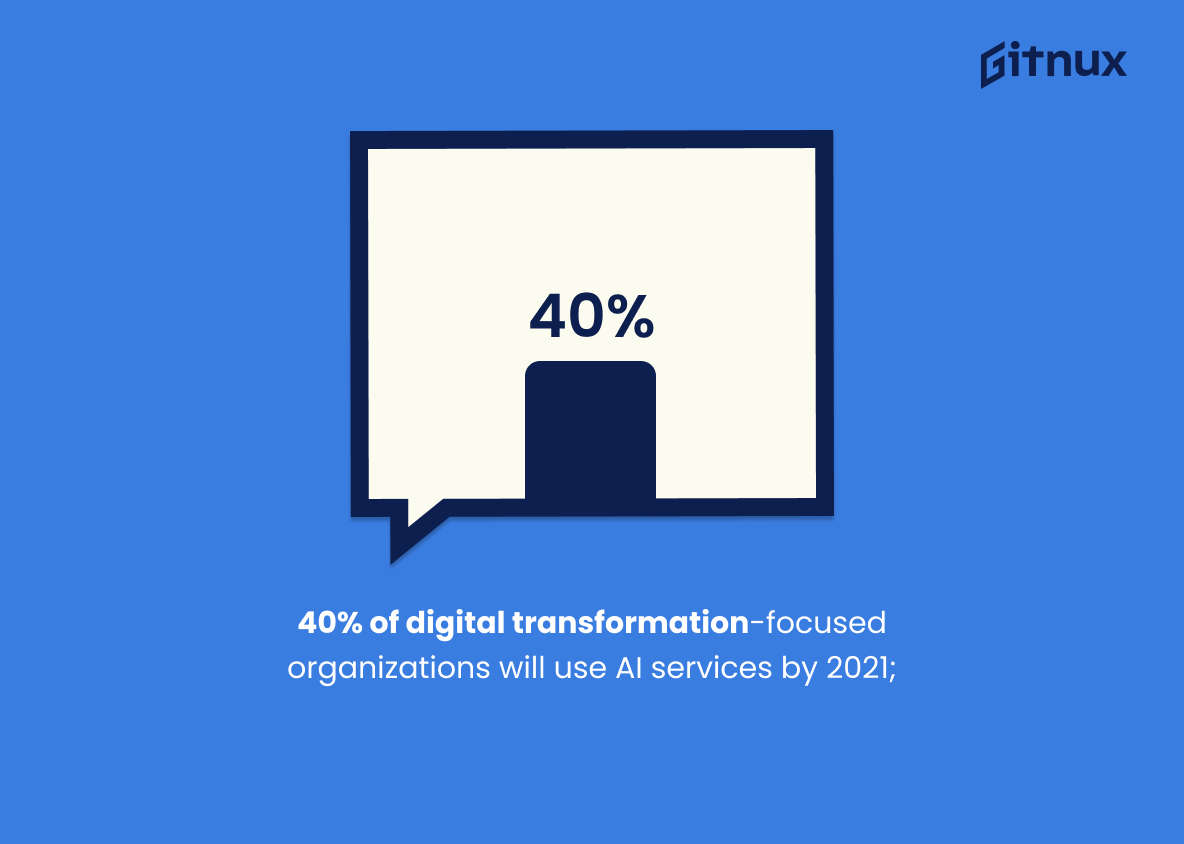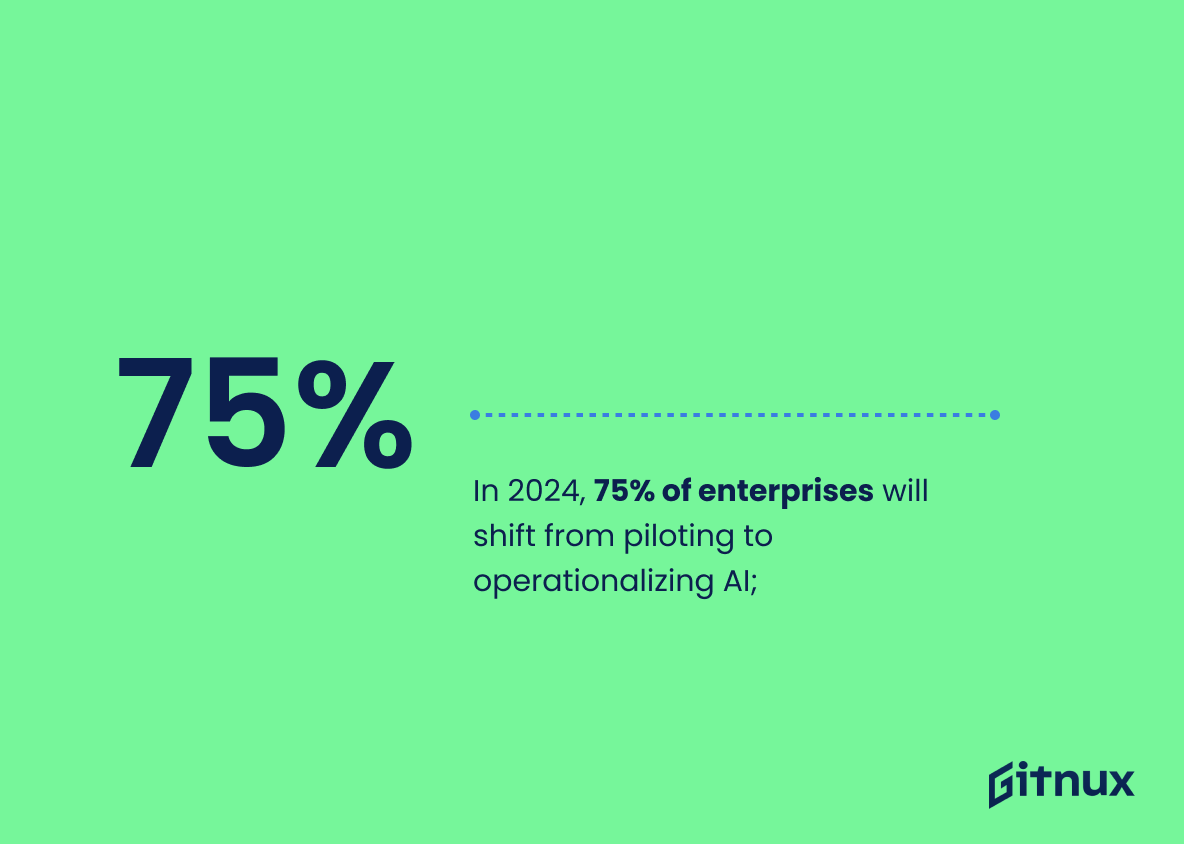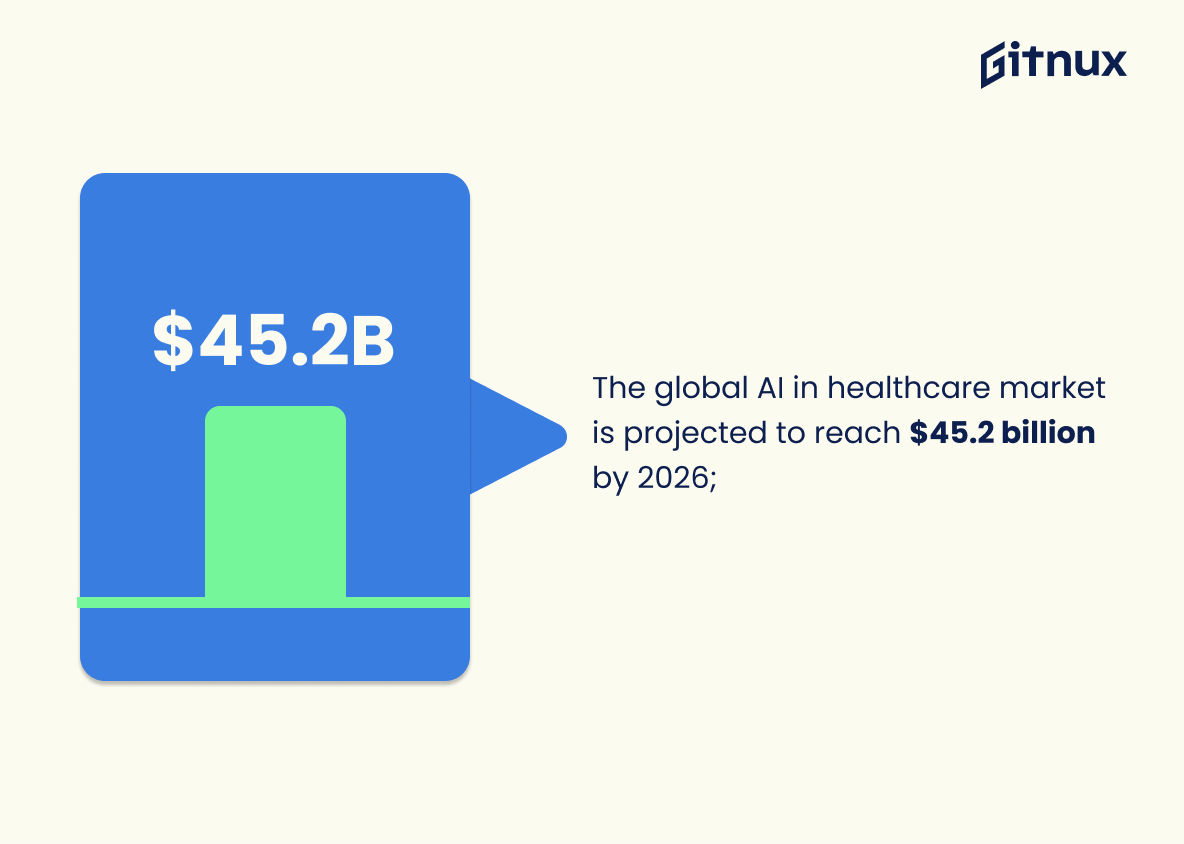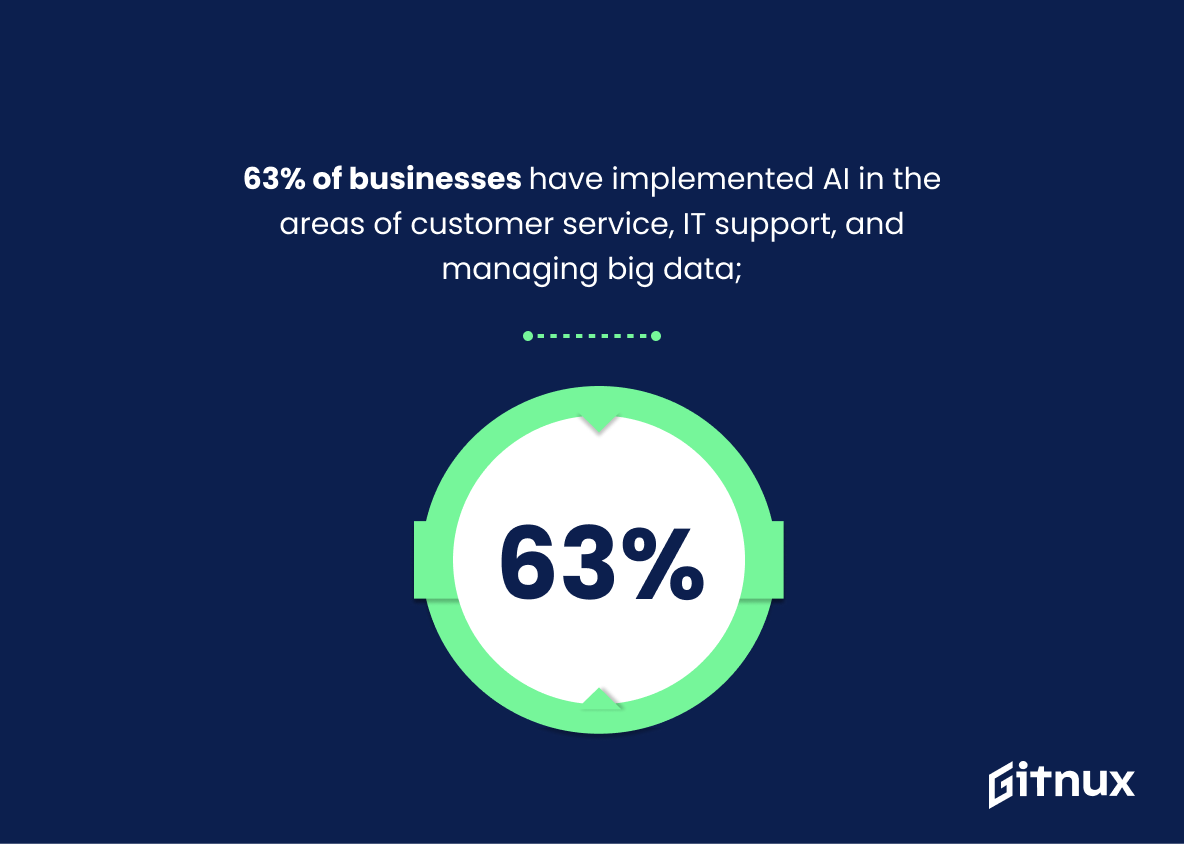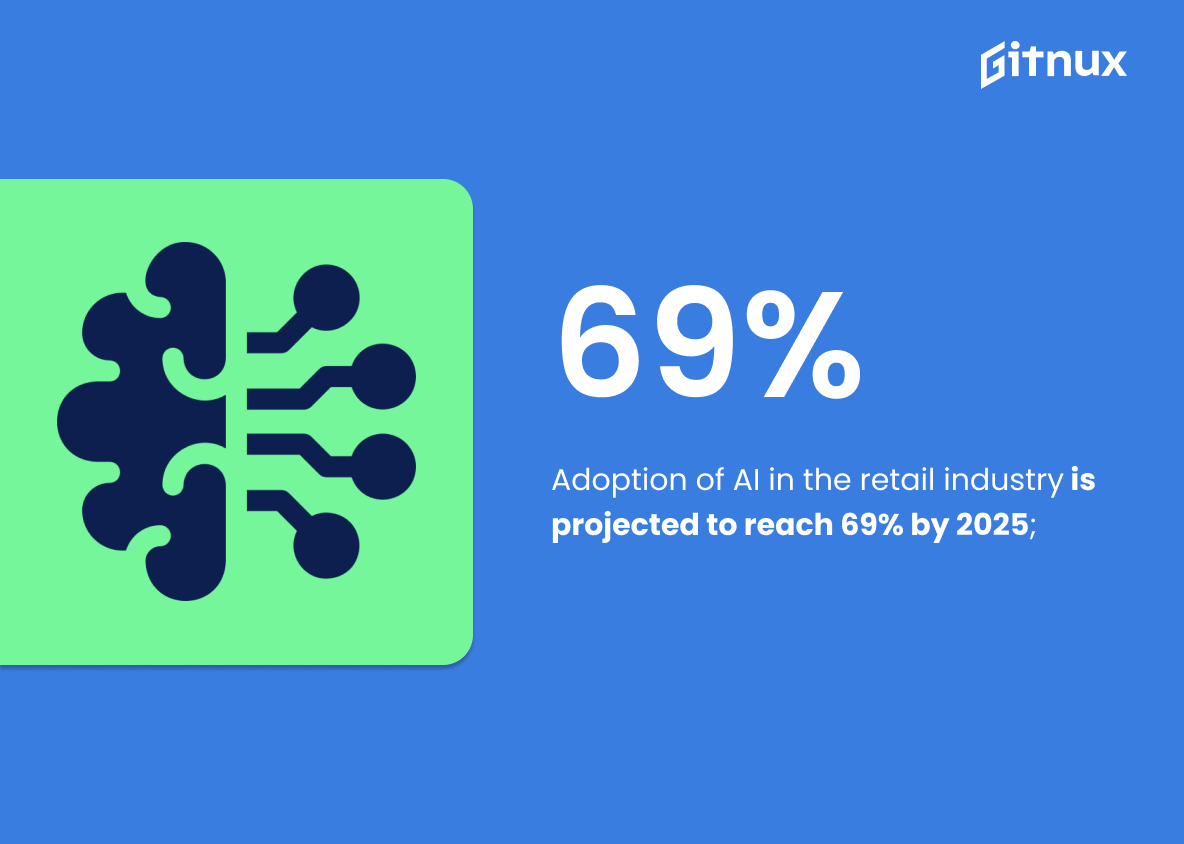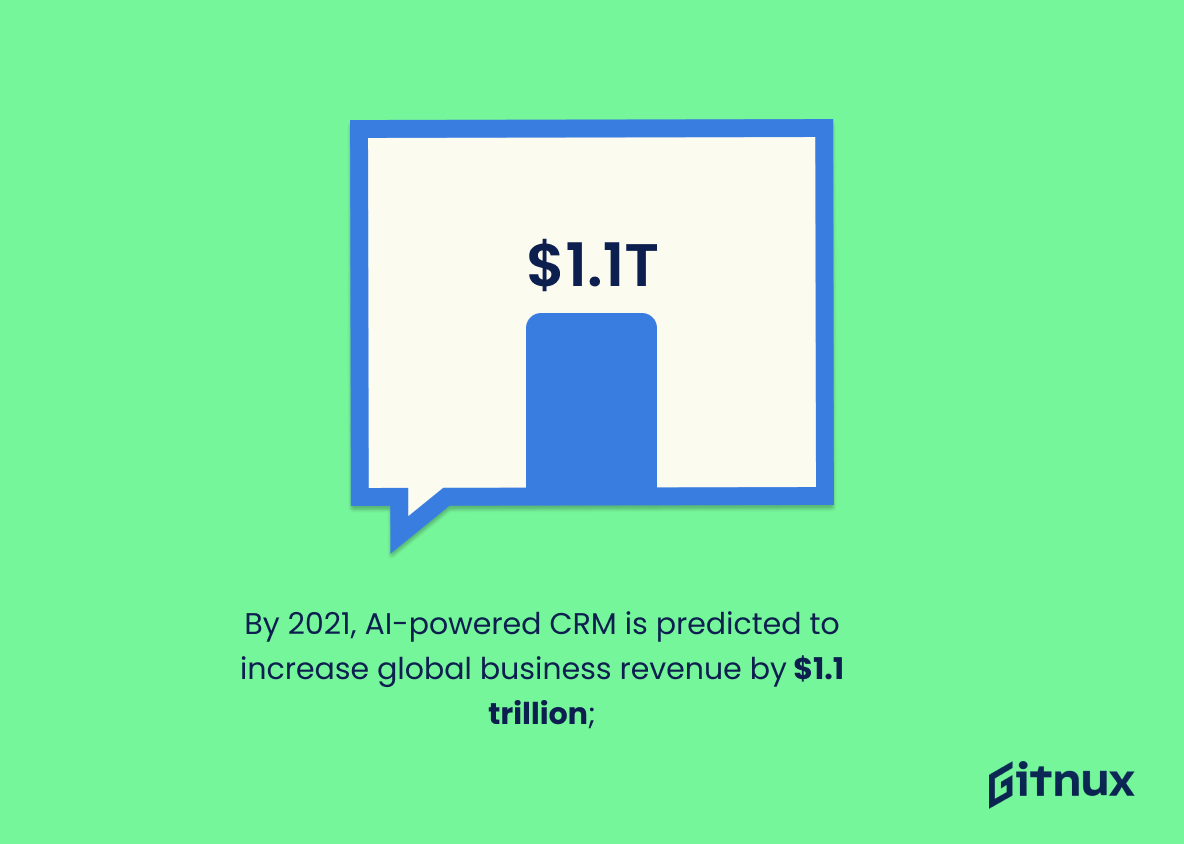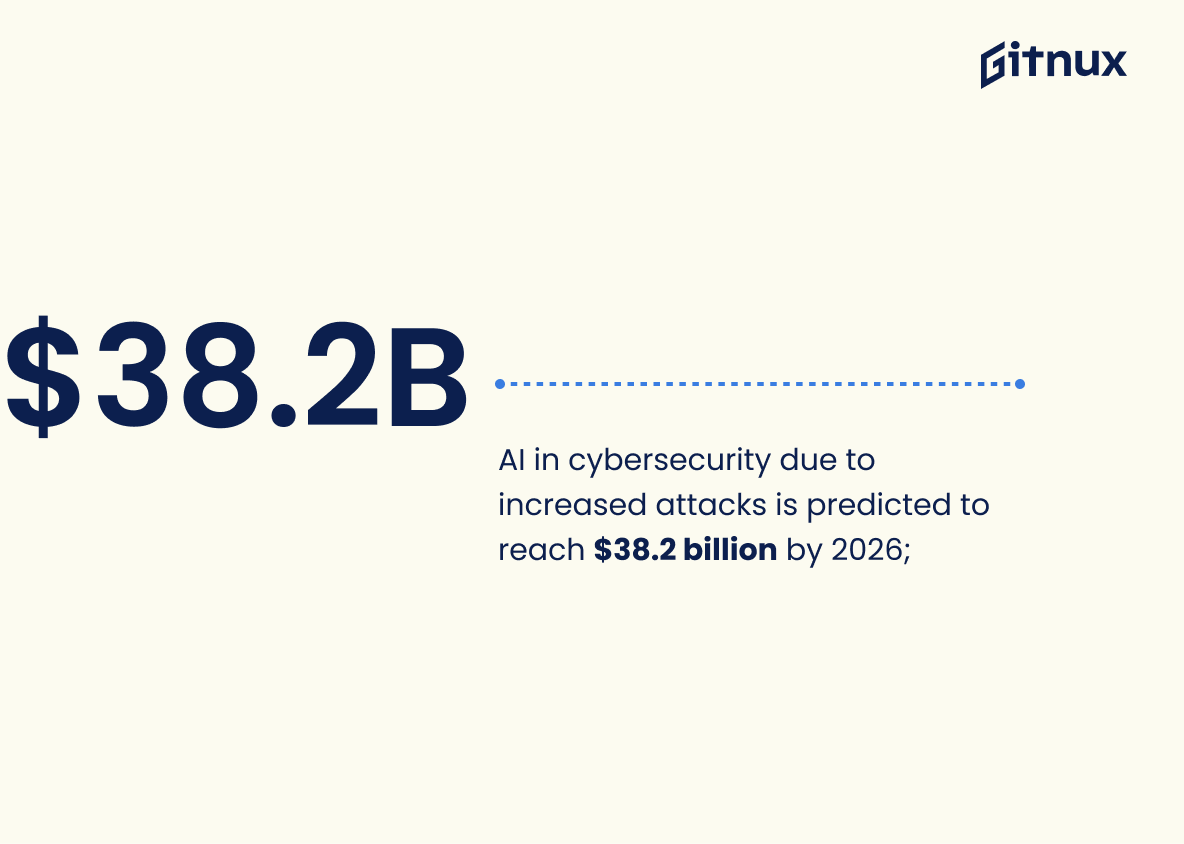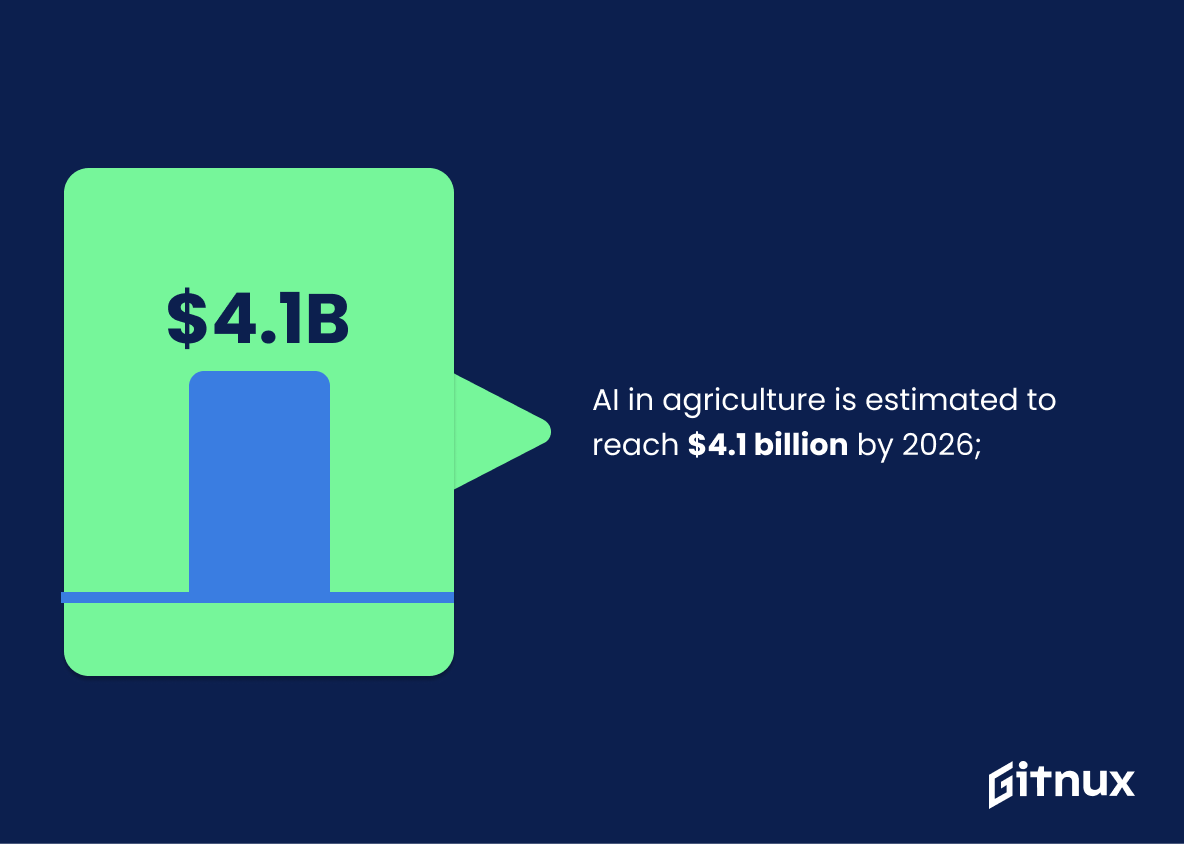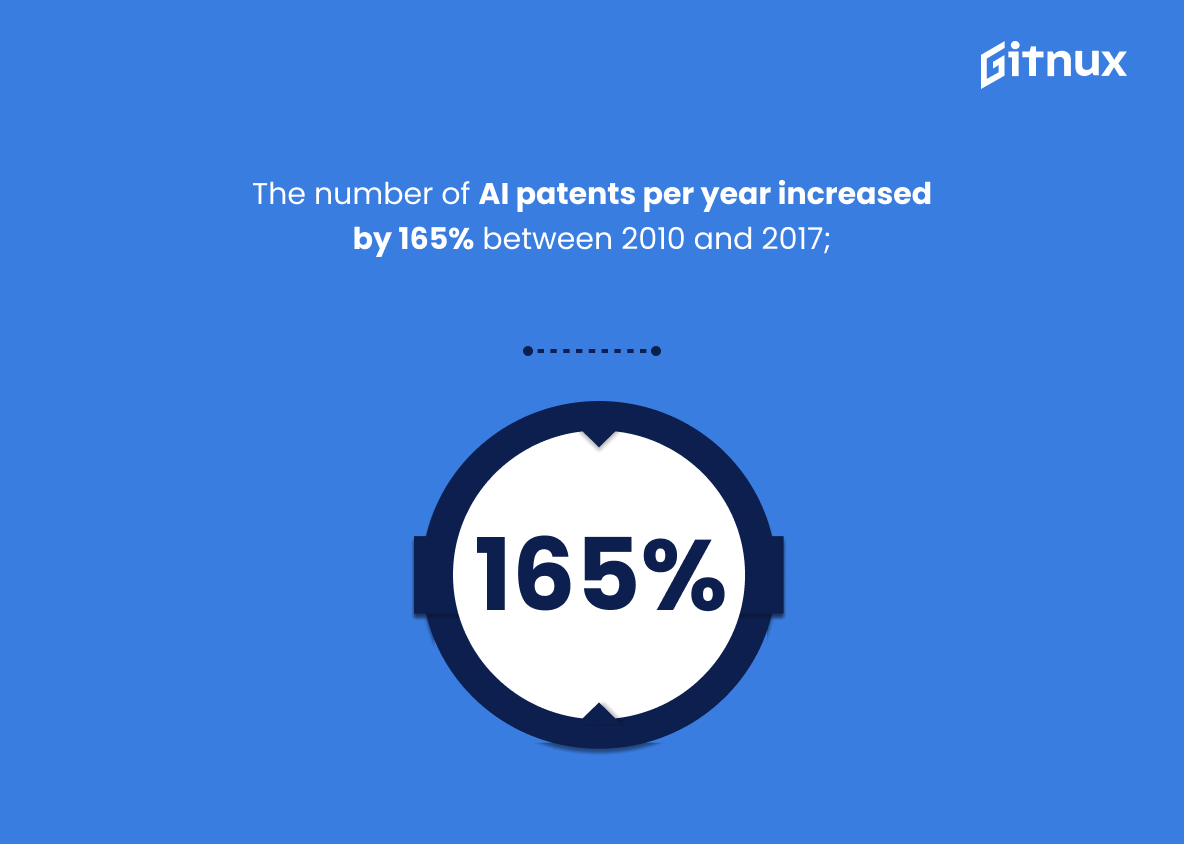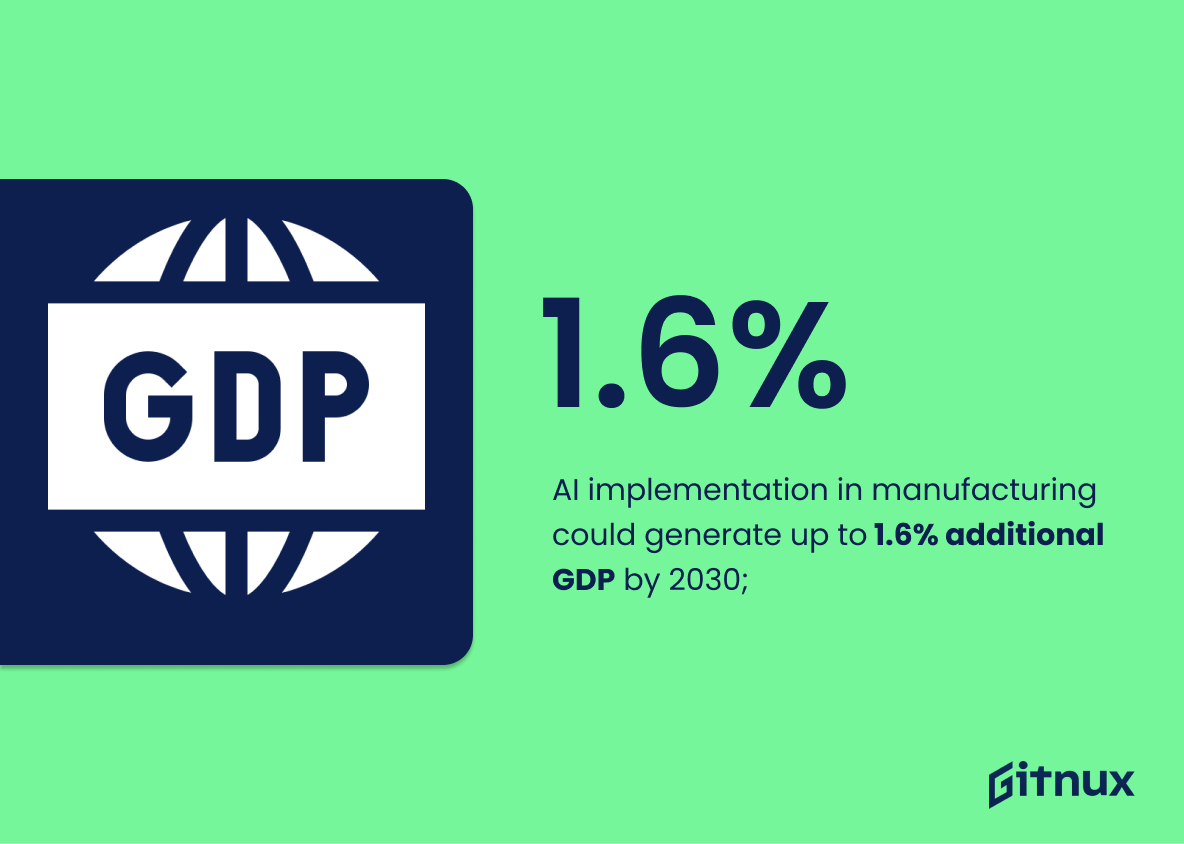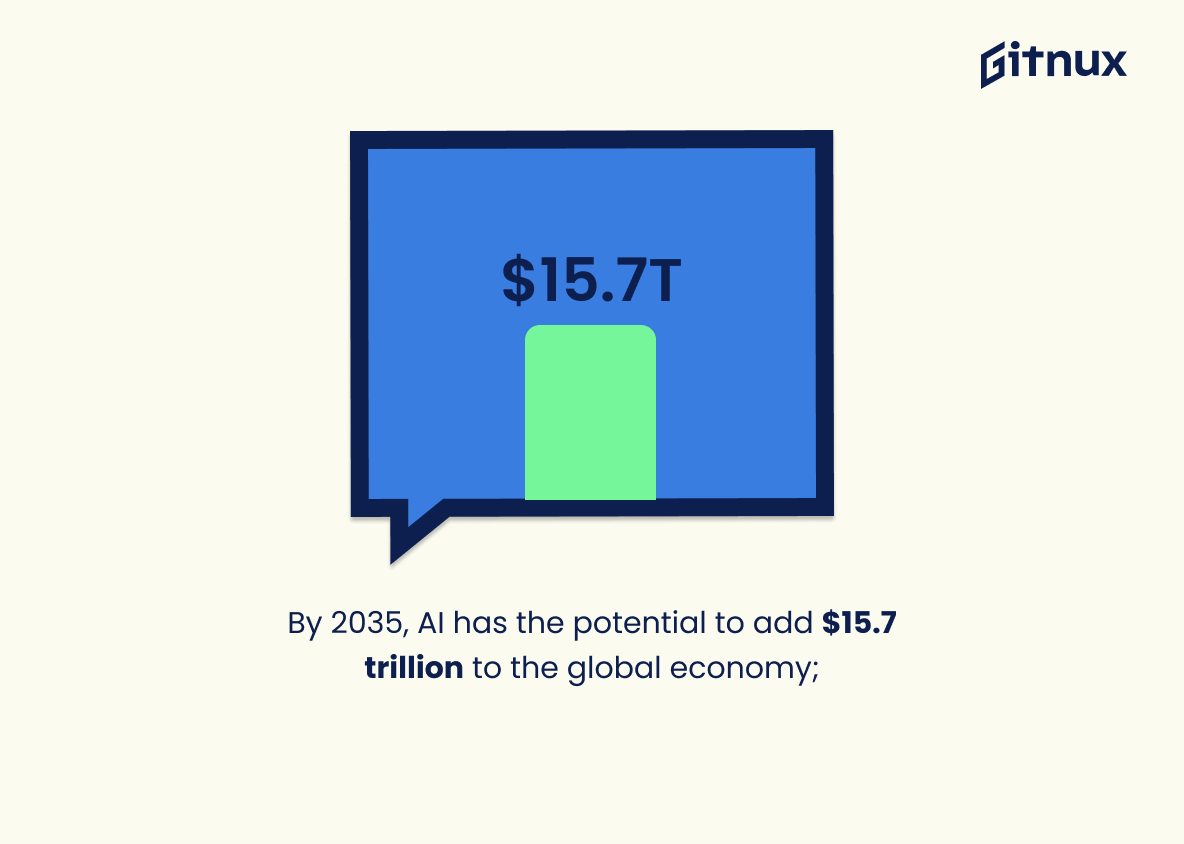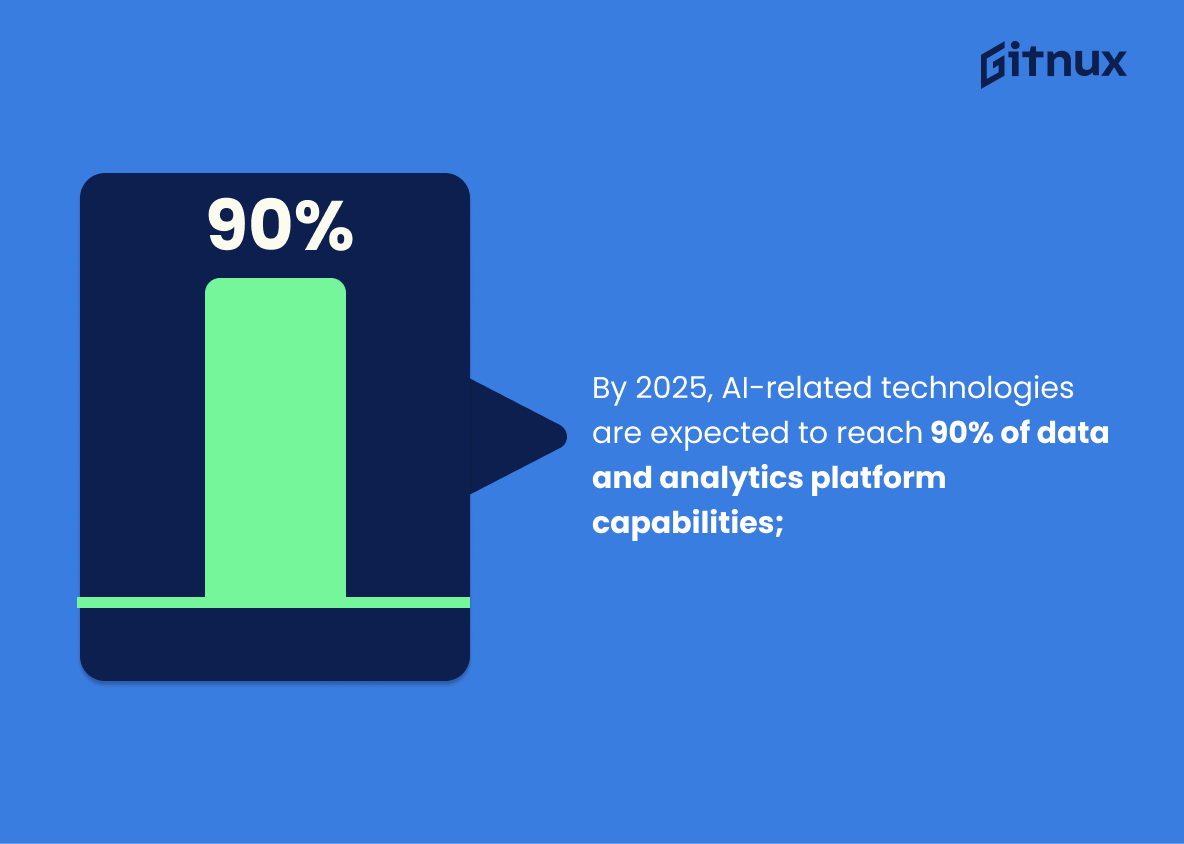The use of Artificial Intelligence (AI) is rapidly increasing in many industries, and the statistics show that this trend will continue to grow. From global business executives believing AI can give them a competitive advantage to consumers and businesses using AI-powered chatbots for customer service, it’s clear that AI has become an integral part of our lives. This blog post looks at 20 different Ai Statistics from various sources which demonstrate how far we have come with implementing artificial intelligence into everyday life.
AI Statistics Overview
71% of consumers and businesses are willing to use an AI-powered chatbot for customer service;
This statistic is a testament to the growing acceptance of AI-powered chatbots in customer service. It shows that the majority of consumers and businesses are open to using this technology, indicating that AI-powered chatbots are becoming increasingly popular and accepted as a viable customer service option. This is an important point to consider when discussing the impact of AI on customer service, as it demonstrates that AI is becoming an increasingly important part of the customer service landscape.
40% of digital transformation-focused organizations will use AI services by 2021;
This statistic is a telling indication of the growing importance of AI services in the digital transformation space. It shows that organizations are increasingly recognizing the potential of AI to help them achieve their goals and are investing in the technology to make it a reality. This is an important development that should not be overlooked, as it could have a significant impact on the way businesses operate in the future.
In 2024, 75% of enterprises will shift from piloting to operationalizing AI;
This statistic is a clear indication of the growing importance of AI in the business world. It shows that more and more enterprises are recognizing the potential of AI and are taking steps to implement it in their operations. This is a sign that AI is becoming an increasingly integral part of the modern business landscape, and that companies are investing in it to stay competitive. As such, this statistic is a powerful reminder of the need for businesses to stay up-to-date with the latest AI developments and to ensure they are taking advantage of the opportunities it presents.
The global AI in healthcare market is projected to reach $45.2 billion by 2026;
This statistic is a testament to the immense potential of AI in healthcare, indicating that the market is expected to grow exponentially over the next few years. It is a clear indication that AI is becoming increasingly important in the healthcare industry, and that investments in this technology are likely to pay off in the long run. This statistic is a powerful reminder of the importance of AI in healthcare and its potential to revolutionize the industry.
63% of businesses have implemented AI in the areas of customer service, IT support, and managing big data;
This statistic is a testament to the growing prevalence of AI in the business world. It shows that a majority of businesses have embraced AI technology and are using it to improve customer service, IT support, and data management. This indicates that AI is becoming an increasingly important part of the modern business landscape, and that businesses are recognizing the potential of AI to improve their operations.
Adoption of AI in the retail industry is projected to reach 69% by 2025;
This statistic is a powerful indicator of the potential of AI in the retail industry. It shows that AI is becoming increasingly popular and is being adopted by more and more businesses. This is an important point to make in a blog post about AI statistics, as it demonstrates the potential of AI and how it can be used to improve the efficiency and effectiveness of retail operations.
By 2021, AI-powered CRM is predicted to increase global business revenue by $1.1 trillion;
This statistic is a powerful indicator of the potential of AI-powered CRM to revolutionize the global business landscape. It demonstrates the immense potential of AI to drive economic growth and create new opportunities for businesses of all sizes. It also highlights the importance of investing in AI technology to stay competitive in the ever-evolving digital economy. In short, this statistic is a clear sign of the immense potential of AI to revolutionize the way we do business.
AI in cybersecurity due to increased attacks is predicted to reach $38.2 billion by 2026;
This statistic is a powerful indicator of the growing importance of AI in cybersecurity. As cyberattacks become more frequent and sophisticated, organizations are increasingly turning to AI-based solutions to protect their networks and data. This statistic demonstrates the magnitude of the investment that is being made in AI-based cybersecurity solutions, and the potential for this market to grow even further in the coming years.
AI in agriculture is estimated to reach $4.1 billion by 2026;
This statistic is a testament to the potential of AI in agriculture, indicating that the industry is set to experience significant growth in the coming years. It is a clear indication that AI is becoming increasingly important in the agricultural sector, and that businesses and organizations should be investing in the technology to stay competitive. This statistic is a powerful reminder of the potential of AI in agriculture and its ability to revolutionize the industry.
The number of AI patents per year increased by 165% between 2010 and 2017;
This statistic is a testament to the rapid growth of AI technology over the past decade. It shows that AI has become an increasingly important part of our lives, with more and more companies investing in the development of AI-related products and services. This statistic is a clear indication that AI is here to stay and will continue to shape the future of technology.
AI implementation in manufacturing could generate up to 1.6% additional GDP by 2030;
This statistic is a powerful reminder of the potential economic impact of AI implementation in manufacturing. By 2030, AI could be responsible for a 1.6% increase in GDP, which could have a significant impact on the global economy. This statistic is a clear indication that AI is a technology worth investing in, and that its potential to drive economic growth should not be overlooked.
By 2035, AI has the potential to add $15.7 trillion to the global economy;
This statistic is a powerful indicator of the potential of AI to revolutionize the global economy. It shows that AI has the potential to be a major driver of economic growth, creating new opportunities and increasing productivity. This could lead to increased wages, more jobs, and a stronger global economy. It is a reminder of the importance of investing in AI technology and research to ensure that the world can reap the full benefits of this technology.
36% of businesses have already implemented AI consultations with employees;
This statistic is a testament to the growing prevalence of AI consultations in the workplace. It shows that AI is becoming an increasingly important part of the business landscape, and that businesses are taking steps to ensure that their employees are well-equipped to handle the changes that AI brings. This statistic is a clear indication that AI is here to stay, and that businesses are taking the necessary steps to ensure that their employees are prepared for the future.
By 2025, AI-related technologies are expected to reach 90% of data and analytics platform capabilities;
This statistic is a powerful indicator of the potential of AI-related technologies to revolutionize data and analytics platforms. It suggests that in the near future, AI-related technologies will be ubiquitous in data and analytics platforms, allowing for more efficient and accurate analysis of data. This could have a profound impact on the way businesses and organizations make decisions, as well as the way they interact with customers and other stakeholders. As such, this statistic is an important reminder of the potential of AI-related technologies to revolutionize the way we use data and analytics.
Conclusion
The statistics presented in this blog post demonstrate the increasing importance of artificial intelligence (AI) across a variety of industries. From customer service and retail to banking, healthcare, manufacturing, and cybersecurity – AI is being adopted by businesses around the world as they look for ways to gain competitive advantage.
The potential economic impact of AI implementation is also significant with estimates ranging from $1.1 trillion up to $15.7 trillion over the next 15 years or so. It’s clear that AI will continue to play an important role in our lives going forward and it’s essential that organizations stay ahead of the curve when it comes to leveraging its power for success.
References
0. – https://www.capgemini.com
1. – https://www.learn.g2.com
2. – https://www.fico.com
3. – https://www.marketsandmarkets.com
4. – https://www.prnewswire.com
5. – https://www.idc.com
6. – https://www.wipo.int
7. – https://www.statista.com
8. – https://www.gartner.com
9. – https://www.salesforce.com
10. – https://www.pwc.com
11. – https://www.fortunebusinessinsights.com
ZipDo, cited June 2023: Ai Statistics
